10 A non-toxic environment
The Government will take steps to deal with pollution along Norway’s coastline and in its fjords, and to re-establish a clean environment in areas that are contaminated by earlier releases of pollutants. Action will be taken to prevent pollution that has previously been released into soil or water from spreading further or being taken up by plants, animals or people. As a general rule, ecological toxins are to be removed from circulation. This means that materials containing ecological toxins should not be recycled or re-used. Waste and residual products that contain ecological toxins must be managed soundly, and ecological toxins are to be taken out of circulation and removed from product life cycles. The Government will:
implement a new action plan for remediation of contaminated sediments
implement a new action plan for remediation of contaminated soil in day-care centres and playgrounds
ensure that the necessary measures are carried out by 2012
at sites where pollution from contaminated soil is spreading to priority areas for remediation of contaminated sediments
at sites where pollution represents a risk to human health
at sites on Svalbard with contaminated soil
consider introducing a requirement for enterprises, before closing operations or relocating, to document that there is no risk to health or the environment from contaminated soil on the site, and to take remedial action in the event that contaminated soil represents an unacceptable risk
identify new priority types of hazardous waste and increase the proportion of hazardous waste collected from consumers; this includes reviewing measures and instruments to give users/consumers more information on products that end up as hazardous waste
consider stricter regulation of releases of priority ecological toxins and pharmaceutical waste to sewer systems, and by 2012 assess whether it is necessary to apply stricter requirements to releases of ecological toxins from sewerage systems
consider introducing new limit values for concentrations of priority ecological toxins in fertiliser products.
10.1 Contaminated sediments
The problems
Norway’s fjords and coastline include some of its most spectacular and distinctive scenery. They provide an important basis for value creation in the fishing, aquaculture and tourist industries, and are widely used for recreational activities. It is essential to keep the seabed uncontaminated by ecological toxins and other hazardous substances in order to maintain a rich flora and fauna, with fish and shellfish that are fit to be eaten and sold, and so that areas can be developed without the added costs of clean-up operations.
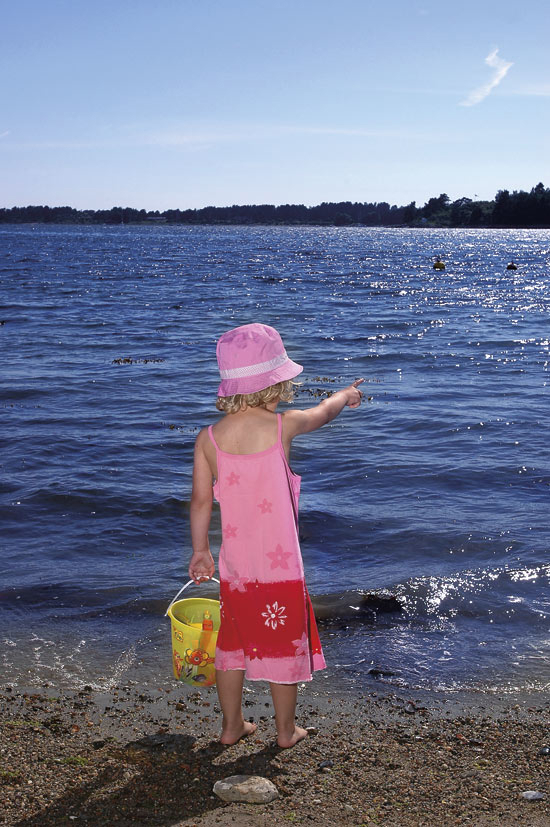
Figure 10.1 Sediments in many harbours and fjords are contaminated with ecological toxins
Photo: Marianne Otterdahl-Jensen
Pollutants originating from earlier industrial activities have been deposited in sediments in many harbours and fjords along the coast. These pollutants are primarily a threat to the marine flora and fauna, and may have both acute effects and long-term effects such as genetic and reproductive disorders. Some pollutants are also transferred along the aquatic food chain and may end up in fish and shellfish eaten by people.
On Svalbard, too, there are sediments in the vicinity of past and present settlements and mining sites that are contaminated with ecological toxins. Inputs from some sites may be substantial, so the Governor of Svalbard is giving priority to efforts to identify the sources and eliminate further inputs of ecological toxins to Svalbard’s coastal waters.
Direct releases, long-range transport of pollution and releases from contaminated sediments have resulted in substantial levels of pollution in a number of fjords. The Norwegian Food Safety Authority has therefore issued consumption advisories for 31 fjords or parts of fjords, with recommendations on the kinds and quantities of fish and shellfish caught in the fjords that may be safely eaten (see figure 10.2).
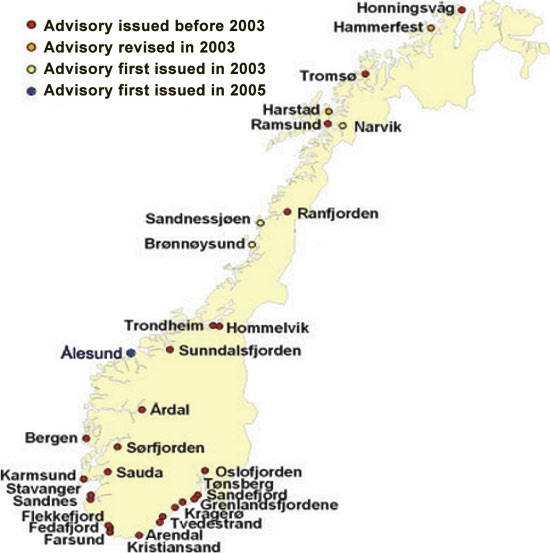
Figure 10.2 Areas where consumption advisories were in force, August 2006
Source Matportalen.no
Remediation of contaminated sediments is costly and time-consuming. The aim of the measures to be implemented is to remove pollutants from circulation and from the ecosystem, leaving a cleaner seabed and a healthier environment for plants, fish, shellfish, seabirds and marine mammals. In the long term, this will make it possible to rescind consumption advisories and will mean that fish and shellfish can be eaten and sold without any risk to human health.
Since the 1970s, Norway has invested approximately NOK 45 billion in sewage treatment. Industrial releases of organic material have also been greatly reduced during the same period. Most rivers and fjords are now clean enough to swim and fish in, their waters are clear enough to see the bottom, and there are fewer algal blooms. However, sediments are still polluted, and the Government is supporting a major drive to clean up this pollution so that restoration of the coastal waters can be completed.
The Government presented an overall strategy for remediation of contaminated sediments in a white paper called Protecting the Riches of the Seas (Report No. 12 (2001–2002) to the Storting). The first phase of its implementation focused on building up knowledge and developing plans for remediation. Valuable experience and knowledge has been gained from some clean-up projects and pilot projects. A national committee for contaminated sediments was appointed by the Ministry of the Environment in October 2003 with representatives from a broad range of institutions, and has presented advice and recommendations on the clean-up process. The Government is now initiating a nationwide remediation initiative and here presents an action plan for its first phase.
10.2 Action plan for contaminated sediments
There are many areas where contaminated sediments should be cleaned up, and the costs are high. The resources available for the process from various bodies are limited, making it necessary to set priorities. Programmes of measures at county level have recently been drawn up for the 17 highest-priority areas.
The programmes of measures apply only to the most heavily polluted parts of the fjords and to the onshore sources of pollution. Their purpose is to take an integrated approach to onshore sources of pollution and contaminated sediments and to identify the measures necessary to achieve the environmental objectives that have been established for the areas in question. As far as possible, they also identify the costs associated with these measures and who should be responsible for funding them. The programmes of measures have been drawn up by the offices of the county governors in collaboration with relevant actors (municipalities, industrial enterprises, organisations). Figure 10.3 shows the areas for which programmes of measures have been drawn up. Plans for other areas where there are contaminated sediments will be drawn up by 2009 as part of the water management planning process. Water management plans are drawn up in accordance with the EU Water Framework Directive.
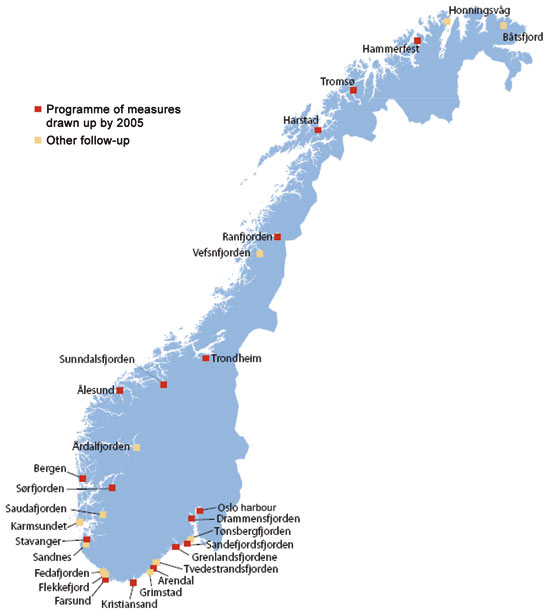
Figure 10.3 Contaminated sediments: areas covered by programmes of measures
Source Norwegian Pollution Control Authority
Priorities for remediation are needed to ensure that the available resources are devoted to the areas where the best results can be obtained. Good results require satisfactory information on the pollution situation in the area in question and control of current sources of pollution.
It is essential to link remediation projects to relevant development projects in order to attract local backers who can provide some funding and keep the projects moving forward. For example, the National Coastal Administration is responsible for dredging shipping lanes and fishing ports. Environmental dredging operations, which involve removal of contaminated sediments, are carried out as part of this work. The costs can be reduced by linking the conditions set by the county governors for environmental dredging in projects of this nature to the overall action plan for contaminated sediments. A good example of this approach is the agreement that has been reached between interested parties to split the cost of the remediation project for the Oslo harbour basin. The Government is therefore giving first priority to areas where there is an urgent need for clean-up operations because of the severity of the contamination, and where there are also plans for other developments. Hammerfest, Harstad, Farsund, Kristiansand and Oslo are in this category.
There are other areas where there is also an urgent need to deal with severe pollution, and information on the pollution situation and the control over current sources of pollution are good enough for sediment remediation to be considered. However, further action must be taken in these areas to eliminate the sources of pollution, and further planning is required before clean-up operations can start. Remediation in these areas – Bergen, the Grenland area, Sandefjord and Drammen – will therefore be carried out in the second phase of the action plan.
Plans for the third category of areas vary. In some areas, further assessment of the spread of pollution from contaminated sediments is necessary. In others, such assessment will only be possible after thorough investigations of onshore pollution sources and action to bring them under control. Finally, recent investigations in certain areas show definite improvements in the pollution situation. Monitoring should be continued in these areas before remediation is considered.
The Government will therefore divide implementation of the 17 programmes of measures into three phases (see table 10.1).
Table 10.1 Programmes of measures divided into three groups
| Phase 1 | |
| Hammerfest | Planned developments will bring pollution sources under control and involve some clean-up on land |
| Harstad | Dredging of port planned |
| Farsund | Development of residential area near small area of contaminated sediments |
| Kristiansand | A number of measures completed. To be continued in new areas |
| Oslo | Remediation in connection with road construction, the «Fjord City» development, and reorganisation of port facilities |
| Phase 2 | |
| Bergen | Inputs from major pollution sources continuing. Further dispersal of pollution from sediments in specific parts of the fjord to be halted. |
| Grenland | Heavily polluted, thorough documentation available |
| Sandefjord | May be dispersal from sediment in part of the fjord. Completed measures must be followed up |
| Drammen | Risk of dispersal of pollution from certain areas. |
| Phase 3 | |
| Tromsø | Further study needed of possible measures to deal with pollution sources and small hot-spot |
| Ranfjorden | Identification of land-based sources and decisions on measures. Monitoring shows improvement of pollution levels in water |
| Trondheim | Measures implemented, but investigations needed in other areas of the fjord |
| Sunndalsfjorden | Monitoring in progress, situation improving |
| Ålesund | Identification of land-based sources and decisions on measures. Sediment remediation must be considered in the long term |
| Sørfjorden | Further study of measures to deal with pollution sources and small hot-spots needed |
| Stavanger | Further study of measures to deal with pollution sources and small hot-spots needed |
| Arendal | Monitoring shows improvement in pollution levels. Further assessment required if there are plans for land-use changes |
New areas of contaminated sediment where the need for measures must be considered are frequently revealed by monitoring, control, construction and other activities. The action plan for contaminated sediments must therefore be flexible, and priorities and funding measures are subject to change.
Costs and how they are to be covered
The costs of remediation depend on the scope of the measures and the solutions chosen, and in most cases, there is no complete overview for the areas covered by programmes of measures. However, on the basis of estimates in the programmes of measures, the total costs are expected to be in the range NOK 800 million to NOK 2 billion. It should be noted that these figures are very uncertain.
As a general rule, the polluter-pays principle applies to remediation. Under the Pollution Control Act, polluters may be ordered to arrange for investigations and clean-up, but in some cases it is impossible to identify who is responsible for pollution, or a firm no longer exists or is unable to pay, or it would not be reasonable to hold those responsible liable for the full costs. Some Government funding will therefore also be contributed for investigation and remediation of contaminated sediments. Indeed, the state itself may be responsible for the pollution in some cases. Wherever possible, the costs will be split, particularly where there are many sources of pollution or where it is difficult to establish clear divisions of responsibility. Nevertheless, the Government expects that in most cases where it is necessary to take action, it will be possible to order those responsible for the pollution to conduct investigations and, if necessary, clean-up operations. Any remediation orders will be based on cost-benefit analyses.
Continued efforts to reduce pollution from ports, shipyards and marinas
In addition to the areas discussed above, which are mostly large areas where there are complex pollution problems and many different polluters, there are large numbers of small areas where pollution in sediments can be traced back to only one or a small number of firms.
In 2006, the Norwegian Pollution Control Authority will order a number of large public ports to report on the extent of dispersal of hazardous substances from the ports to the surrounding waters and sediments. The ports in question are Oslo, Drammen, Sandefjord, Grenland, Arendal, Kristiansand, Stavanger, Bergen, Ålesund, Trondheim, Harstad, Tromsø and Hammerfest. Their investigations are to be completed and their reports filed by the end of 2007. Similar reports may also be required from the major industrial ports. The Government intends all necessary measures to stop the dispersal of ecological toxins to be completed within 10 years (cf. Report No. 12 to the Storting (2001–2002) Protecting the Riches of the Seas). The person responsible for the pollution under the Pollution Control Act will be ordered to cover the costs of these measures as far as possible and provided this is considered to be reasonable. Some sort of cost-sharing scheme is likely to be established for the ports, with the state also contributing funds. The Government intends to require the other commercial ports to carry out similar investigations within the ten years.
The Government is taking steps to ensure that measures to deal with contaminated sediments in marinas are coordinated with other remediation projects in the vicinity. The county governors will be responsible for this.
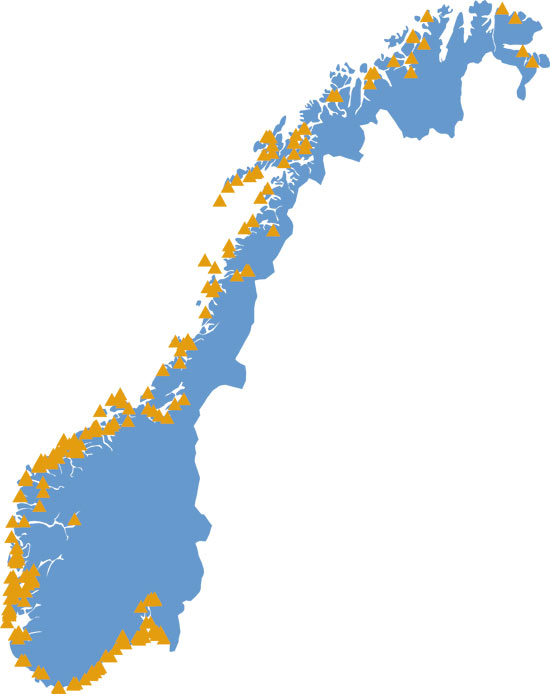
Figure 10.4 Sites of shipyards along the Norwegian coast
Source Norwegian Pollution Control Authority
Investigations carried out by the Norwegian Pollution Control Authority show that there are high levels of tributyltin (TBT) pollution in sediments at many sites near shipyards, including those that have been shut down. TBT was used as an antifouling agent for many years.
In the course of 2007, the Government intends to initiate investigations of sediments outside shipyards (closed and operational) within and outside the areas covered by the programmes of measures. Sites with a high pollution potential and/or where data show that sediments are heavily polluted will be given priority. The results of these investigations will be used to decide whether further studies or action are required on land or under water. Sediment pollution levels at the highest-priority sites are to be investigated and the necessary measures identified by 2010.
Advisory measures
The national committee for contaminated sediments was appointed by the Ministry of the Environment in 2003, and its term of office ended on 30 June 2006. This was intended to coincide with the first phase of the implementation of the strategy for remediation of contaminated sediments. The committee focused mainly on knowledge-building, advising the Norwegian Pollution Control Authority on the development of various types of decision-making tools, and ensuring that strategies and action plans had sufficient legitimacy. Advice and input from scientists and experts will be needed in future as well, as work on contaminated sediments progresses, and the environmental authorities will find appropriate ways of ensuring that such exchanges continue.
10.3 Contaminated soil
10.3.1 The problems
Pollutants released from industrial and other activities in the past have contaminated soil at many sites in Norway. Sources of pollution include local releases from business and industry, old landfills and fugitive emissions from such sources as road traffic, fuelwood use, fires, surface treatment processes and building materials. There is little dilution of ecological toxins that end up in soil. They remain in the same place for a long time, slowly leaching into the surroundings.
Clean-up operations at polluted sites have been in progress for several decades. The environmental authorities have recently organised necessary remediation at approximately 100 sites and surveys at a further 500 priority sites with contaminated soil. Investigations and remediation at the 100 highest-priority sites have involved costs of around NOK 1 billion since 1990.
Textbox 10.1 How dangerous are contaminated sediments?
Contaminated sediments consist chiefly of sand, silt and clay. Concentrations of ecological toxins such as lead, mercury, PCBs and TBT in sediments are usually well below the limits below which products are not classified as hazardous waste (see graphs). The content of organic material (dead plant biomass, old sewage residues, etc.) often gives sediments a dark colour as well as a foul odour when brought to the surface. Only rarely are the concentrations of hazardous substances so high that there is any direct, acute risk to people in connection with activities such as swimming. The main reasons for taking steps to clean up contaminated sediments are to improve living conditions for marine organisms, and in a longer perspective, to improve food safety.
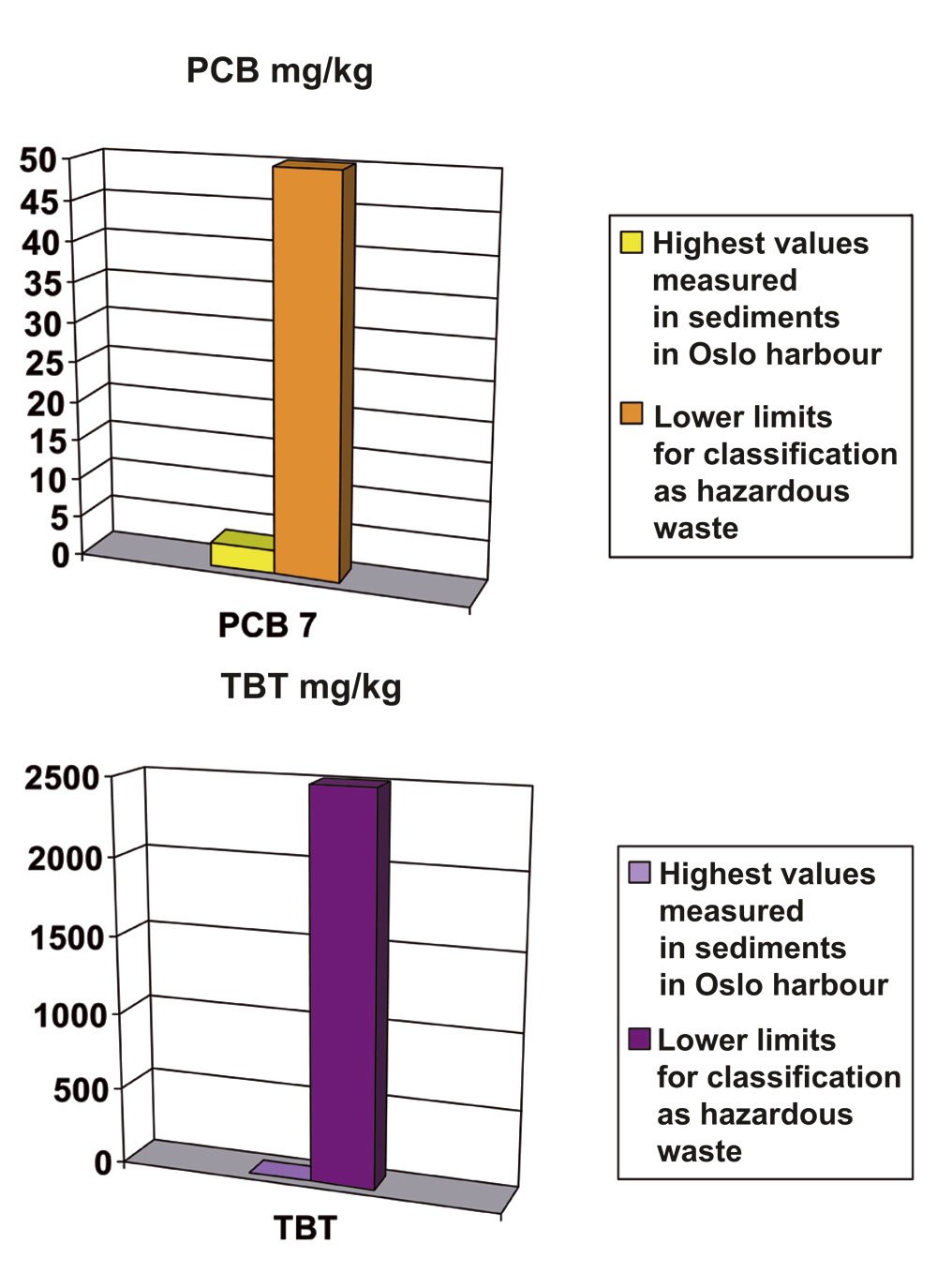
Figure 10.5 Concentrations of some environmental toxins in sediments in Oslo’s harbour basin, compared with the lower limits for classification of products as hazardous waste.
Source Norwegian Pollution Control Authority
Nevertheless, there are still several thousand sites where the soil is known or believed to be contaminated. At most of these sites, current land use probably means there is little risk to health or the environment. But there are still many sites where further action is required because pollution may pose a risk to human health or leach into marine sediments in areas scheduled for remediation.
Hazardous substances are also released from buildings. For instance, PCBs in exterior paints, insulation foams and concrete can spread to the nearby soil and sediments. The Government will consider measures to deal with this type of soil contamination and its sources.
Construction and excavation in urban areas often leaves a surplus of contaminated soil that is removed from the sites. Steps must be taken to ensure the proper handling and deposition of this soil.
10.3.2 Intensifying surveys and remediation
At around 130 of the 500 sites that have recently been investigated, there is a risk to human health and a risk of dispersal of ecological toxins. At the same time, other sites where there are similar risks have been identified. The Government will ensure that action is taken at the sites where pollution is shown to be most serious by 2012; this means sites where pollution from contaminated soil is released to priority areas for remediation of contaminated sediments (high-risk areas and areas where consumption advisories have been issued) and sites where pollution can pose a human health risk. This is a priority area on Svalbard, too, where the Governor will be responsible for identification of sites where ecological toxins are leaching from contaminated soil to the sea, and for any necessary follow-up action.
Textbox 10.2 Sediment remediation
Contaminated sediments cannot be dredged up without causing some resuspension of the particles, and thus of pollutants. This is true regardless of the dredging method used and how the sediments are subsequently disposed of. So far, the most widely used method of dealing with contaminated sediments has therefore been in situ capping, which involves leaving them in place and covering them with clean material. This seals the pollutants in place so they are no longer available for uptake by marine flora or fauna.
This method is not feasible everywhere, however. The seabed may be exposed to strong currents or turbulence from shipping traffic, or it may be too steep or the water too shallow for capping. Dredging or excavation of sediments may be necessary close to port facilities and elsewhere along the shoreline, either to provide sufficient depth for shipping or in connection with construction. In such cases, capping of contaminated sediments is not possible. The alternative is to remove them and place them elsewhere where it possible to prevent further dispersal or leaching of pollutants. This may involve disposal on land or under water.
At present, there are no technological solutions available for large-scale in situ remediation of sediments, nor are existing methods of destruction, such as incineration, suitable for contaminated sediments.
The enormous quantities of material involved pose a major challenge when it comes to the deposition of contaminated marine sediments. For example, one-half to one million cubic metres of contaminated sediment will be dredged up during the remediation of the Oslo harbour basin in 2006 and 2007. This translates into 50 000 to 100 000 truckloads or 2500 to 5000 barge loads. Landfill capacity is limited, so it would be difficult to use landfilling as the main solution for all remediation projects. Various other issues also have to be considered when depositing sediments on land, such as management and treatment of seepage, physical, chemical and biological stability, potential odour problems, biological treatment options, transport, and conflicts between local and national interests. Efforts should be made to develop technology for separating sediments and dealing with (small) fractions containing higher concentrations of ecological toxins separately, preferably using biological methods (bioremediation). This could reduce the area needed for treatment, enable reclamation of residual products and keep costs down.
The Government expects that in most cases where it is necessary to take action, it will be possible to order investigations and, if necessary, remediation of contaminated soil. Any remediation orders will be based on cost-benefit analyses.
The Government will draw up a more complete overview of sites where the soil is believed to contaminated by the end of 2009. This will require surveys of the remaining industries with the greatest pollution potential and substances that have not previously been surveyed. Relevant branches will include nurseries and greenhouses (pesticides), shipyards, galvanising shops, small and medium-sized mines, fire-training areas and petrol stations. Establishments where it is likely that new priority substances such as brominated flame retardants, phthalates, PFOS-related compounds, and chlorinated paraffins will be found in the soil must also be surveyed. A complete survey of heavy metal runoff from civilian and military shooting ranges is to be completed by the end of 2007.
To ensure sound management of contaminated soil from construction and excavation, the Government will consider developing a suitable system for handling and disposing of this type of material. This would improve control of types of excavated material that are currently disposed of outside established channels. The Government will also consider whether a product standard should be drawn up for clean soil and fill materials, including requirements for documentation of the concentrations of hazardous substances. Requiring compliance with a standard would prevent uncontrolled use of contaminated soil, for example in day care centres, which has in fact happened.
To minimise the risks associated with contaminated soil at former industrial sites, the Government will consider introducing a requirement for enterprises, before closing operations or relocating, to document that there is no risk to health or the environment from contaminated soil on the site, and to take remedial action in the event that contaminated soil represents an unacceptable risk. Such requirements have already been imposed in specific cases by the pollution authorities.
10.3.3 Action plan for remediation of contaminated soil in day care centres and playgrounds
Pollution from past industrial and other activities has contaminated soil in many places in Norway.
Clean-up operations at polluted sites like these have been in progress for several decades. Efforts so far have focused on the most heavily polluted sites. The Government now intends to take this a step further in a special effort to protect children. The purpose of this effort is to reduce the exposure of Norwegian children to ecological toxins and enable parents to feel confident that their children’s health is not at risk when they are at day care centres or playgrounds.
The problems
There are around 40 000 playgrounds in Norway, including those at approximately 6000 day care centres. Samples taken in the largest towns and the most heavily polluted industrial communities where there is widespread soil pollution show elevated concentrations of lead, PAHs and arsenic in soil from many day care centres and other playgrounds. Sources of pollution include industry, road traffic, general urban activity and contaminated soil and fill. Elevated concentrations of PCBs and mercury have also been found at some sites. Levels of ecological toxins in soil from day care centres are generally similar to those in soil from other parts of the town or district.
In addition, all day care centres and playgrounds where there is playground equipment made of CCA-treated wood (wood treated with a preservative consisting of copper, chromium and arsenic compounds) have arsenic pollution in the soil around the equipment. Existing data indicate that outside industrial areas and the largest towns, it is normally only soil around playground equipment made of CCA-treated wood that is contaminated. However, better documentation is needed.
It is unlikely that concentrations high enough to represent an acute health hazard for children will be found, but the environmental authorities wish to reduce overall lifetime exposure levels. The Government has therefore drawn up an action plan for remediation of contaminated soil in day care centres and playgrounds.
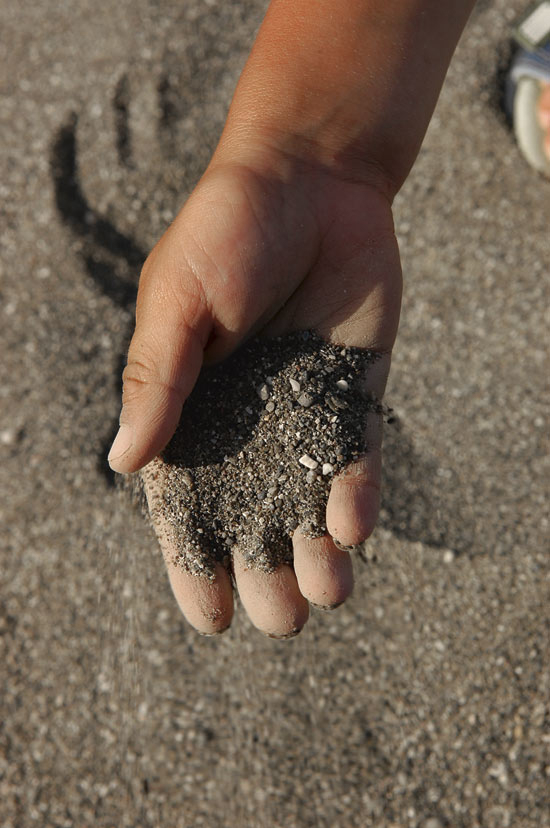
Figure 10.6
Photo: Marianne Otterdahl-Jensen
When and where are investigations and remediation to take place?
1. Investigations of soil in day care centres and outdoor play areas that are particularly exposed to pollution will be performed in the10 largest towns and five large industrial districts in Norway by the end of 2008.
Around one-third of Norway’s population live in the 10 largest towns and five large industrial districts (see figure 10.8). It is likely that most of the outdoor play areas with contaminated soil, other than those where arsenic has leached from playground equipment, are in these areas. Plans are therefore being made to test soil for contamination at day care centres and outdoor play areas that are particularly exposed to pollution in the 10 largest towns and the five large industrial districts by the end of 2008. This will involve around 2000 day care centres and 40 – 50 outdoor play areas that are exposed to pollution. A number of other day care centres that are not considered to be exposed to pollution will be used as reference sites.
2. Remediation measures shown to be necessary by the investigations are to be completed by the summer of 2010.
The investigations will be followed up by necessary remediation and other measures by the summer of 2010. Before issuing any remediation orders, the pollution control authorities will assess whether the measures are in reasonable proportion to the damage and nuisance caused by the pollution. This will include an assessment of the financial capacity of the day care centre in question. This will ensure policy coherence, since the Government’s day care policy includes capping day care centre fees, securing full day care coverage and reducing the exposure of Norwegian children to ecological toxins.
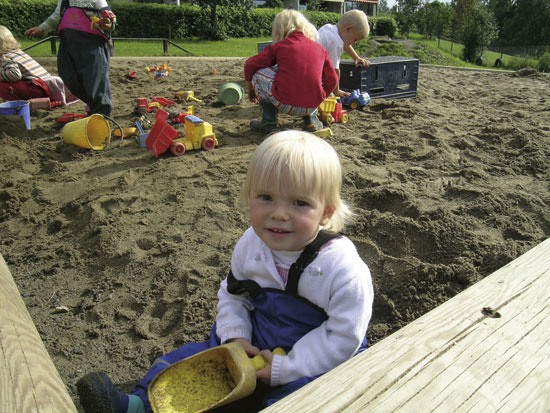
Figure 10.7 Investigations have revealed that soil in many day care centres in the largest towns is contaminated
Photo: Kristin Kink Rannem
3. A plan for the rest of Norway’s day care centres and playgrounds is to be drawn up by the summer of 2010.
A plan for dealing with the rest of Norway’s day care centres and playgrounds will be drawn up, incorporating the lessons learned from the investigations carried out during the first phase. This plan is to be completed by the summer of 2010.
Many municipalities have already started investigations and clean-up operations in day care centres on their own initiative. This is a very welcome development, and municipalities other than the 15 involved in the first phase that wish to carry out investigations of their day care centres before the summer of 2010 will be encouraged to do so.
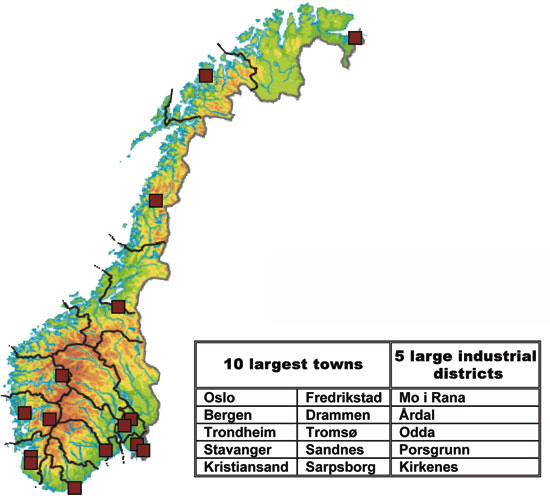
Figure 10.8 The 10 largest towns and five large industrial districts involved in the first phase of the action plan
Source Norwegian Pollution Control Authority
What is to be done?
Soil where levels of contamination caused by general urban and industrial activities exceed limits established on the basis of new quality criteria for soil in day care centres and playgrounds will be replaced with clean soil or covered with sheet mulch and clean soil. Grass or other ground cover will be sown wherever appropriate.
The National Institute of Public Health, with assistance from the Norwegian Pollution Control Authority, is in the process of formulating quality criteria for soil in day care centres and playgrounds. These will take into account whether children will only come into contact with ecological toxins through normal play, digging, dirty hands, ingesting soil and so forth, or whether there are additional paths of exposure such as water from local wells, or fruit, berries or vegetables grown within the area belonging to the day care centre.
Soil contaminated by arsenic from treated wood onsite is to be removed and replaced with clean soil. At the same time, CCA-treated wood in sandpit frames is to be removed and replaced with non-CCA wood. Remaining CCA wood is to be replaced as soon as possible; meanwhile, CCA wood is to be treated often (at least every other year) with stain to keep arsenic leaching to a minimum.
Sandpit framing materials are considered to be the chief source of arsenic in terms of both children’s direct exposure and leaching to the soil. It is considered that ordering all CCA wood, aside from sandpit materials, to be replaced at the same time would be disproportionately expensive, given the pollution and exposure risks.
To avoid further contamination of soil at day care centres and playgrounds, the soil at all sites where new day care centres are planned is to be checked for pollution before construction begins. Documentation will be required for all soil delivered to new or existing day care centres showing that it is free from pollution. Frequent treatment of any remaining CCA wood with stain is also important.
Who will be responsible for investigations and remediation?
As a general rule, it is the person or entity responsible (polluter, property owner) who is responsible for ensuring that there is no contaminated soil in day care centres, playgrounds or similar areas that can cause health or environmental damage. However, many sites are affected by historical pollution or by fugitive emissions (from traffic, fires, etc.). It has been calculated that the overall costs of the investigation and remediation programme outlined above will be in excess of NOK 200 million for the period 2007–2010.
In cases where it would be unreasonable for various reasons to make the person or entity responsible bear the full costs, some Government funding may be contributed.
A number of municipalities have already begun surveys and investigations of contaminated soil in day care centres. In Bergen, remediation has been carried out at day care centres and heavily contaminated playgrounds in the city centre (44 sites). In Oslo, investigations have been conducted at the city’s 750–800 day care centres, and a remediation programme is in progress. Other municipalities have also conducted or are initiating investigations. This is a very welcome development, and it is important not to discourage municipalities that are showing such enthusiasm in investigating and cleaning up day care centres. However, it is necessary to ensure that investigations and necessary remediation measures are carried out promptly and maintain adequate quality. The Norwegian Pollution Control Authority will therefore, in cooperation with the parties concerned, ensure that the action plan is implemented.
10.4 Reducing hazardous waste generation
Waste is classified as hazardous if the content of hazardous substances exceeds specified levels. Because a growing number of products contain hazardous substances, the quantity of hazardous waste generated from such products is also rising. To reduce health and environmental risks from hazardous waste, the Government therefore aims to reduce the quantity of hazardous waste generated and ensure that as much as possible of the waste is collected and dealt with properly.
At present there are a few landfill facilities for hazardous waste in Norway, in addition to 100 municipal landfills and 30–40 landfills at industrial enterprises. Hazardous waste has also been deposited at some of the two latter types of sites over the years. There is therefore a risk of releases of ecological toxins to air, water and soil from these sites. Pollution is probably most likely to be released from the older landfill sites.
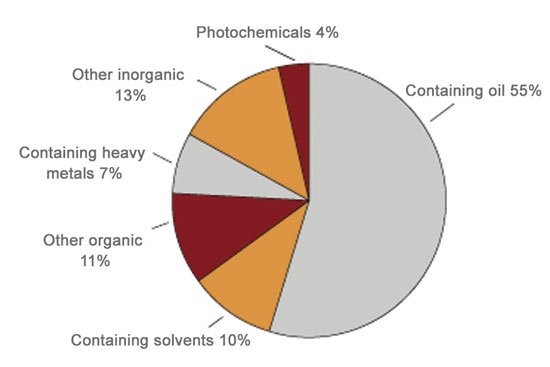
Figure 10.9 Hazardous waste dealt with outside the proper channels
Source Statistics Norway
Nearly 1 million tonnes of hazardous waste is generated in Norway every year, and no information is available on disposal or treatment for about 60 000 tonnes of this, which is classified as disposed of outside the proper channels. Most of this waste is probably dealt with in an environmentally sound manner, but some of it may end up in the environment. Because the substances in hazardous waste may cause serious health injury and environmental damage, the Government will intensify its efforts to ensure that hazardous waste is dealt with properly, especially waste containing ecological toxins. The Government’s target is to reduce generation of each type of hazardous waste by 2020 compared with the 2005 level. Nevertheless, the Government’s efforts to identify new types of priority hazardous waste may result in a rise in the recorded figures for generation of hazardous waste in the short term.
Textbox 10.3 Collection of PCBs
All new use of PCBs has been prohibited since 1980. The total quantity of PCBs in use when the prohibition entered into force was about 1136 tonnes. An estimated 155 tonnes (14 %) is still in service, and 981 tonnes (86 %) has been taken out of use in the course of the past 26 years. Of this, an estimated 560 tonnes has been collected and disposed of properly and 421 tonnes disposed of outside the proper channels. This gives a collection rate of just under 60 % for the entire period.
The quantity of PCBs that has been released from discarded products and building waste disposed of outside the proper channels is not known, but there is substantial pollution from these sources. In some cases, the environmental effects are pronounced, and consumption advisories have been issued in some fjords because levels of PCBs in marine organisms are so high that they may not be safe to eat.
One reason why hazardous waste is disposed of improperly is that definitions of what constitutes hazardous waste are unclear for some types of waste. It can also be difficult for the individual consumer to determine which products are to be treated as hazardous waste when they are discarded. The Government will therefore review ways of making information on what is considered to be hazardous waste or waste electrical and electronic equipment more easily available to users and consumers. The aim is to ensure more effective collection of these products, and a wide range of possible measures and instruments will be assessed, such as labelling and other types of information.
10.5 Waste water and sewage sludge
The use of ecological toxins in products and industrial processes leads to their release via sewerage systems, which transport waste water from households, industry and facilities such as hospitals, waste disposal sites and petrol stations, and surface runoff from impermeable surfaces such as roads, car parks and roofs.
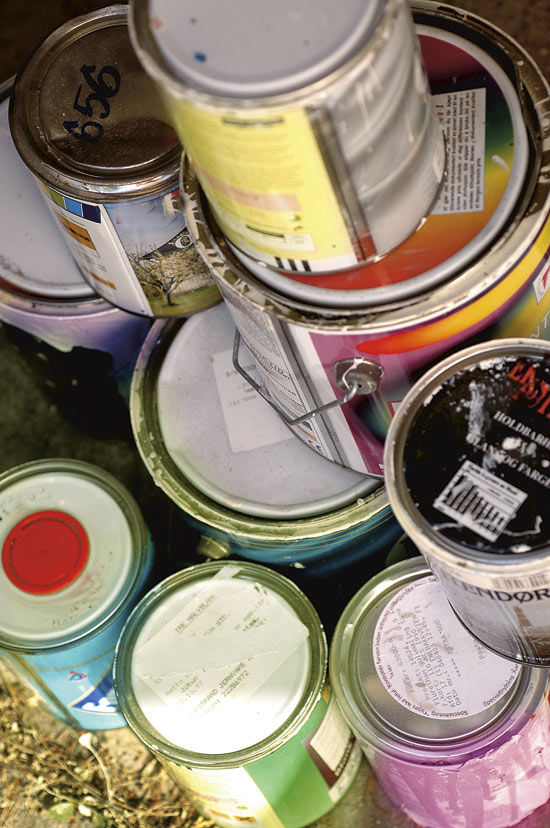
Figure 10.10 Hazardous waste
Photo: Marianne Otterdahl-Jensen
The objective of Norwegian waste water management policy is to remove ecological toxins at source before they are discharged into sewer systems. This has reduced releases of ecological toxins to sewerage systems, but has not eliminated them. Ecological toxins are still being detected in waste water (see table 10.2), but there is a substantial degree of uncertainty in the figures.
Sewage sludge has a high content of organic matter and nutrients and is therefore a useful resource as a fertiliser and soil conditioner. Approximately 112 000 tonnes of sludge was used in various ways in Norway in 2004. The main uses are as fertiliser and soil conditioner in agriculture, in parks and green spaces, and in landfill capping. However, sewage sludge may contain ecological toxins from discharges to the sewer system.
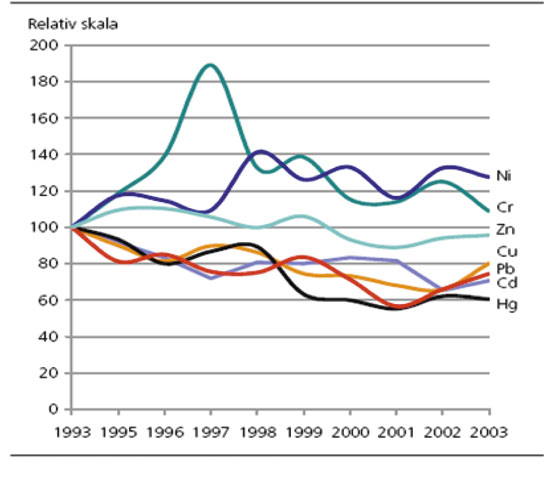
Figure 10.11 Average content of heavy metals in sewage sludge in Norway, 1993–2003
Source Statistics Norway, SESAM database (Norwegian Pollution Control Authority), KOSTRA reporting system
With the closer focus on food safety, better knowledge of the effects of using sewage sludge is needed. The risks involved are uncertain, and are partly related to how the sludge is used. The Scientific Committee for Food Safety is therefore carrying out risk assessments of ecological toxins in sewage sludge. The results will be important in setting priorities for further measures to improve the quality of sewage sludge and how it is used. Monitoring programmes and risk assessments will be conducted to provide the necessary basis for decision making (see Chapter 6).
In order to achieve the national target of eliminating releases of ecological toxins by 2020, the Government will step up its efforts to eliminate releases of such substances from sewerage systems. The main focus will be on eliminating releases at source, in other words reducing inputs to sewerage systems from products and processes.
In cases where it is difficult to eliminate releases at source, treatment at waste water treatment plants is a suitable alternative, although this is costly and technically difficult. At present, there is no established treatment technology that is capable of removing heavy metals, organic ecological toxins or pharmaceutical residues from municipal waste water and that is both reliable and financially viable. The Government will take steps to build up knowledge of the presence of pharmaceutical residues in waste water and facilitate efforts to develop technology for removing pharmaceutical residues and ecological toxins from waste water. The Government will consider whether stricter requirements should be introduced for discharges from sewerage systems by 2012 in its effort to eliminate discharges of ecological toxins and pharmaceutical residues to coastal and inland waters. It will also be necessary to assess whether focusing on reducing releases at source through discharge permits and product control measures will still provide the greatest benefits, or whether more effective treatment should be required at some waste water treatment plants.
Table 10.2 Releases of ecological toxins with municipal waste water (not including sewage sludge) in Norway in 2005. Figures based on measurements and estimates.
| Organic compounds | Heavy metals | ||||
|---|---|---|---|---|---|
| Substance | Unit | Releases in 2005 | Substance | Unit | Releases in 2005 |
| Phthalates (DEHP) | tonnes | 1.5 | Arsenic | tonnes | 1.5 |
| Nonylphenol | kg | 850 | Lead | tonnes | 1.8 |
| PAHs | kg | 80 | Cadmium | kg | 80 |
| Brominated flame retardants | kg | 65 | Chromium | tonnes | 2.3 |
| PCB1 | kg | 1 | Copper | tonnes | 21 |
| Mercury | kg | 80 | |||
| Nickel | tonnes | 6.6 | |||
| Zinc | tonnes | 42 | |||
1 Estimated on the basis of concentrations of PCBs in sewage sludge
The production, handling and use of sewage sludge is governed by the regulations relating to fertiliser products of organic origin. These set maximum limits for the content of heavy metals in sewage sludge. They also limit the quantity of sewage sludge that may be applied per unit area of agricultural land. However, they do not lay down any specific requirements regarding the content of ecological toxins.
To ensure that sewage sludge is used safely, the Government will consider introducing maximum limits for the content of organic ecological toxins. Limit values for the content of priority ecological toxins would help to ensure that continued use of sewage sludge is safe.